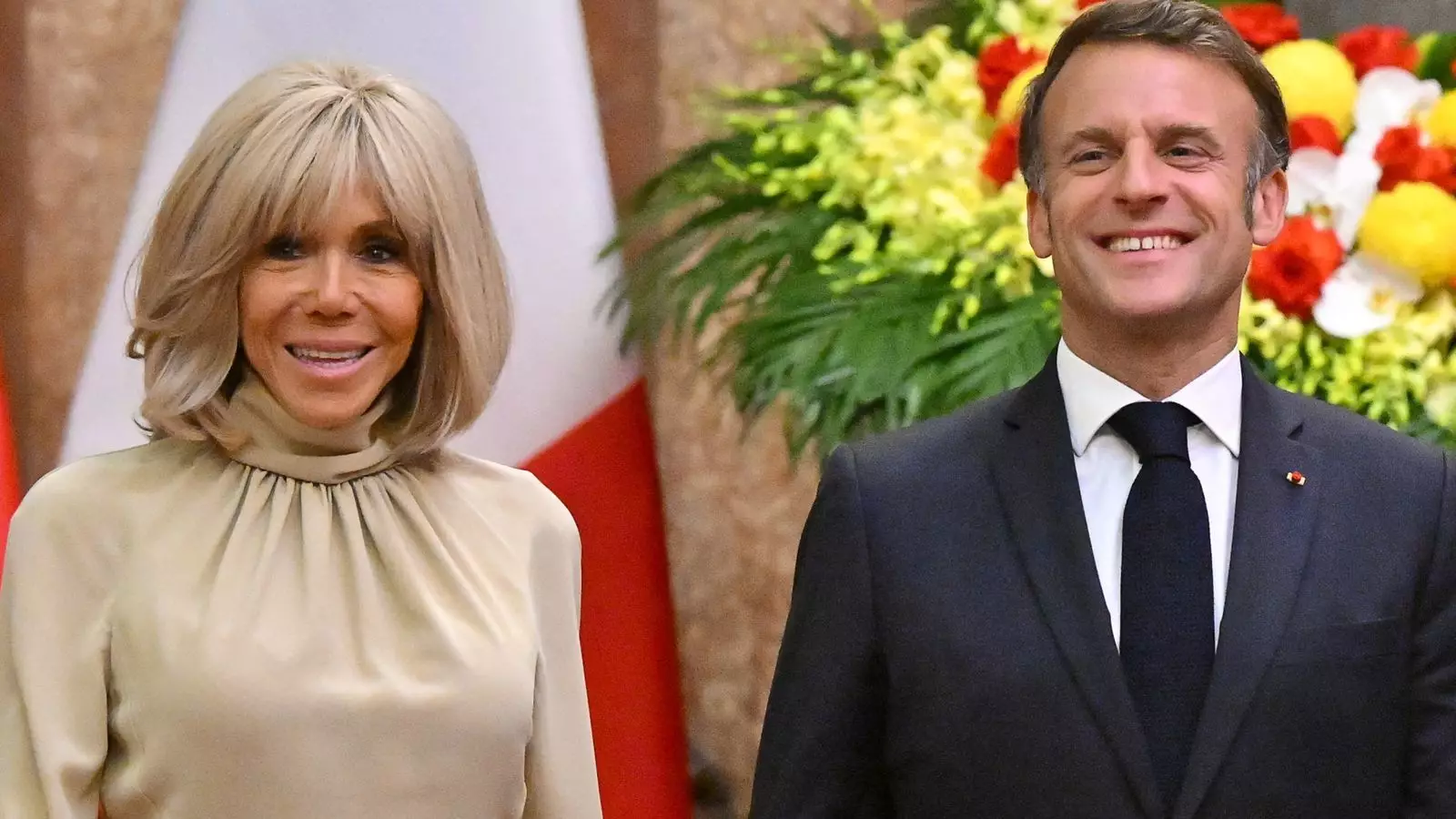Traditionally, state visits by foreign leaders to the United Kingdom have orbitally centered around Buckingham Palace, epitomizing the monarchy’s historic diplomatic grandeur. Yet, the upcoming visit of French President Emmanuel Macron signals a deliberate departure from this convention. Hosting the event at Windsor Castle, rather than the more central London residence, signals an intentional pivot—one driven by pragmatic considerations and perhaps a desire to redefine diplomatic symbolism within the modern monarchic framework. This decision suggests a strategic move to leverage Windsor’s historic charm and serene landscape, fostering an atmosphere of relaxed formality that can promote genuine dialogue and bilateral warmth.
What stands out most forcefully is the departure from the customary pomp to a more intimate, personalized set of encounters. When the Prince and Princess of Wales met Macron and his wife Brigitte on the tarmac, bypassing the usual grand arrivals at Buckingham, it was a calculated choice aimed at building familiarity rather than maintaining distance through stiff protocols. This signals a shift towards a newer, more approachable diplomacy—one that values connection over spectacle. It also acknowledges the changing role of the monarchy: stepping into a more active, relational role in fostering diplomatic ties rather than just serving as ceremonial custodians.
Reimagining Royal Diplomacy in a Changing World
The decision to hold significant events—including a carriage procession and a state banquet—within Windsor’s grounds underscores an intent to intertwine royal history with contemporary diplomacy. The inclusion of personal touches, such as viewing historic gifts like the horse Fabuleu de Maucour or the vintage Charabanc carriage, are subtle yet powerful symbols of tradition and continuity. These personalized elements serve to humanize the State visit, framing diplomatic relations within a shared cultural narrative rather than cold political maneuvering.
However, this approach raises questions about the efficacy of subtle diplomacy in an era of global tensions and complex international alliances. Does privileging tradition and personal storytelling risk diminishing the gravity of diplomatic negotiations? Or does it breathe authenticity into these relationships, creating bonds that transcend words? The Macrons’ private visit to Queen Elizabeth II’s tomb and their participation in a land tour of Windsor’s gardens suggest a carefully curated effort to evoke sentimentality and shared history, but critics might see it as superficial window dressing masking deeper geopolitical nuances.
This shift also highlights Britain’s nuanced positioning in contemporary geopolitics. By embracing a “softer” diplomatic image—one rooted in heritage and personal rapport—the UK seeks to counterbalance its often criticized political insularity. The focus on cultural diplomacy, with its emphasis on historical artifacts and natural landscapes, is a strategic response to the rising importance of soft power, especially amid uncertain international waters.
The Future of Diplomatic Celebrations or a Fleeting Experiment?
While this themed approach may seem refreshing, one must ask whether it is sustainable or merely an experiment in modern royal diplomacy. The potential for Windsor to become a new hub for diplomatic engagements is intriguing, yet it also risks fragility. Can the charm of Windsor, with its historic symbolism, truly substitute the grandeur of Buckingham Palace when addressing larger geopolitical issues? And more critically, how will this approach hold up in future visits—will it foster genuine alliances or simply serve as a picturesque backdrop for photo opportunities?
The Macron visit exemplifies a blend of tradition and innovation—an attempt to humanize diplomacy amid an increasingly transient international landscape. It balances the old-world elegance of royal customs with a more accessible, personal approach. But whether this approach will deepen substantive ties or remain a fleeting embellishment depends on what follows these cultural overtures. Will the warm gestures translate into meaningful cooperation, or will they evaporate as superficial gestures if not backed by tangible policy commitments?
In an era where diplomacy often feels transactional and fast-paced, the British monarchy’s effort to infuse authenticity and history into statecraft could be seen as both a bold experiment and a gamble. It challenges the prevailing notion that diplomatic success hinges solely on strategic transactions, suggesting instead that cultural resonance and personal connection still hold powerful sway in shaping international relations. Whether this will be remembered as a watershed moment or a passing novelty remains to be seen.


Leave a Reply